
由Poroto湖环绕着的白老町,是阿依努人(日本北方原住民族群)的聚集地。湖对岸的传统阿依努村庄Kotan作为国立阿伊努族博物馆的户外天然展区之一而广为人知,不仅如此,该地还可以远眺樽前山。设计师意图开发一座充分利用场地景色,并能够反映阿依努文化的温泉旅馆。
The town of Shiraoi that embraces Lake Porotois a region where many of the Ainu settlements were found. On the opposite shore,Kotan, a traditional Ainu village, spreads as one of the outdoor exhibits of theNational Ainu Museum, while Mount Tarumae can be seen in the distance. We soughtto develop a hot spring inn that would reflect the Ainu culture while making themost of the sceneries.


不会结冰的涌泉是阿依努人冬季的日常用水。Poroto湖的源头就是几公里之外的一处涌泉,场地的停车场一侧也有一处涌泉。因此,设计师在绘制河流线时将湖水引入场地,并计划将场地开发为Poroto湖盆地的景观缩影。停车场一侧的道路是在模拟从前阿依努人沿着溪水顺流而下行至湖泊的路线。
Mem, a spring, was important to the Ainu fortheir daily use, as it did not freeze in winter. The source of Lake Poroto is Memjust a few kilometers away, and there was also a Mem on the side of the parkinglot of the project site. We decided to draw the lake water into the site tocreate a modeled landscape of the Lake Poroto basin. The approach from theparking lot follows the route the Ainu once traveled along the stream from the Memto the lake.
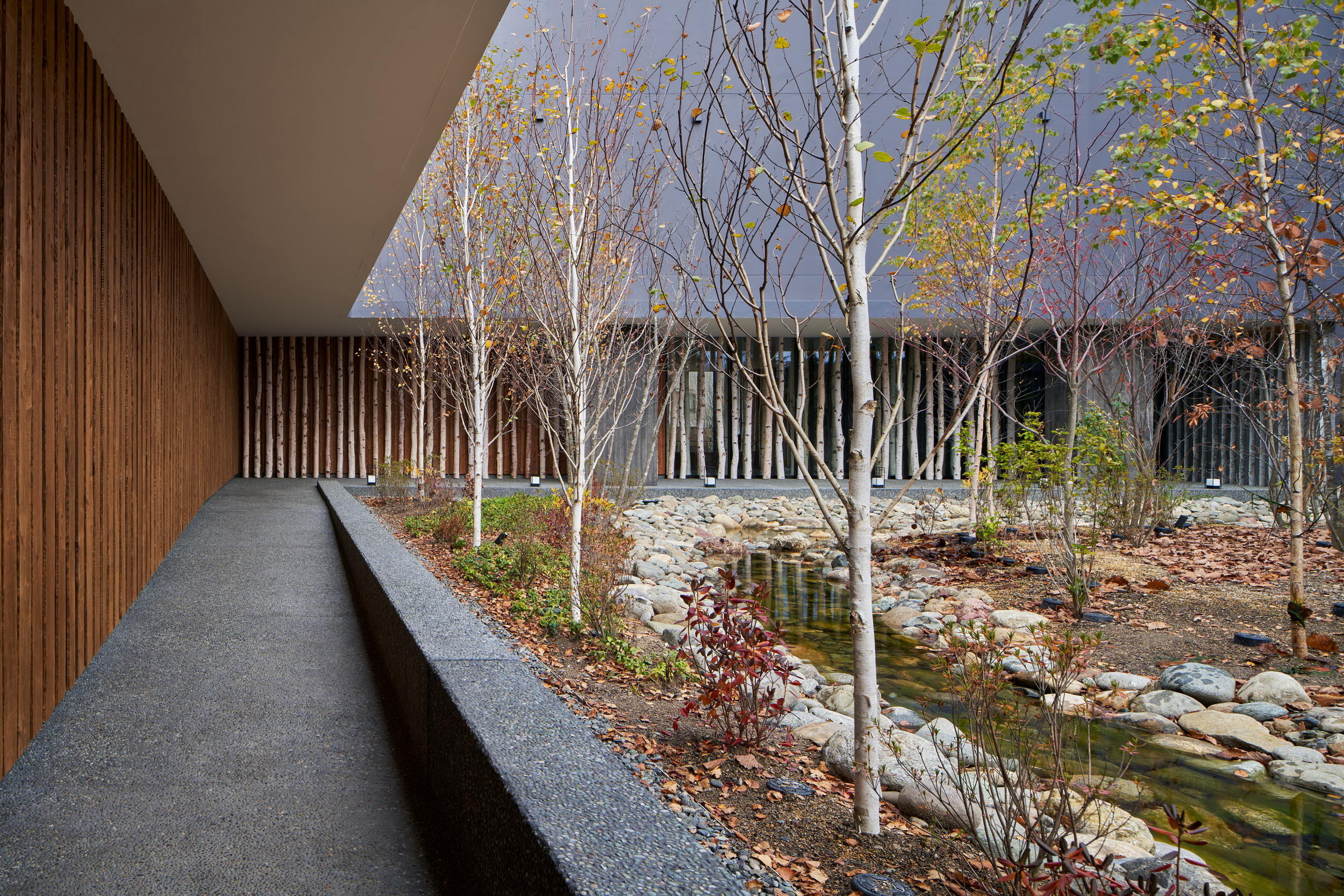
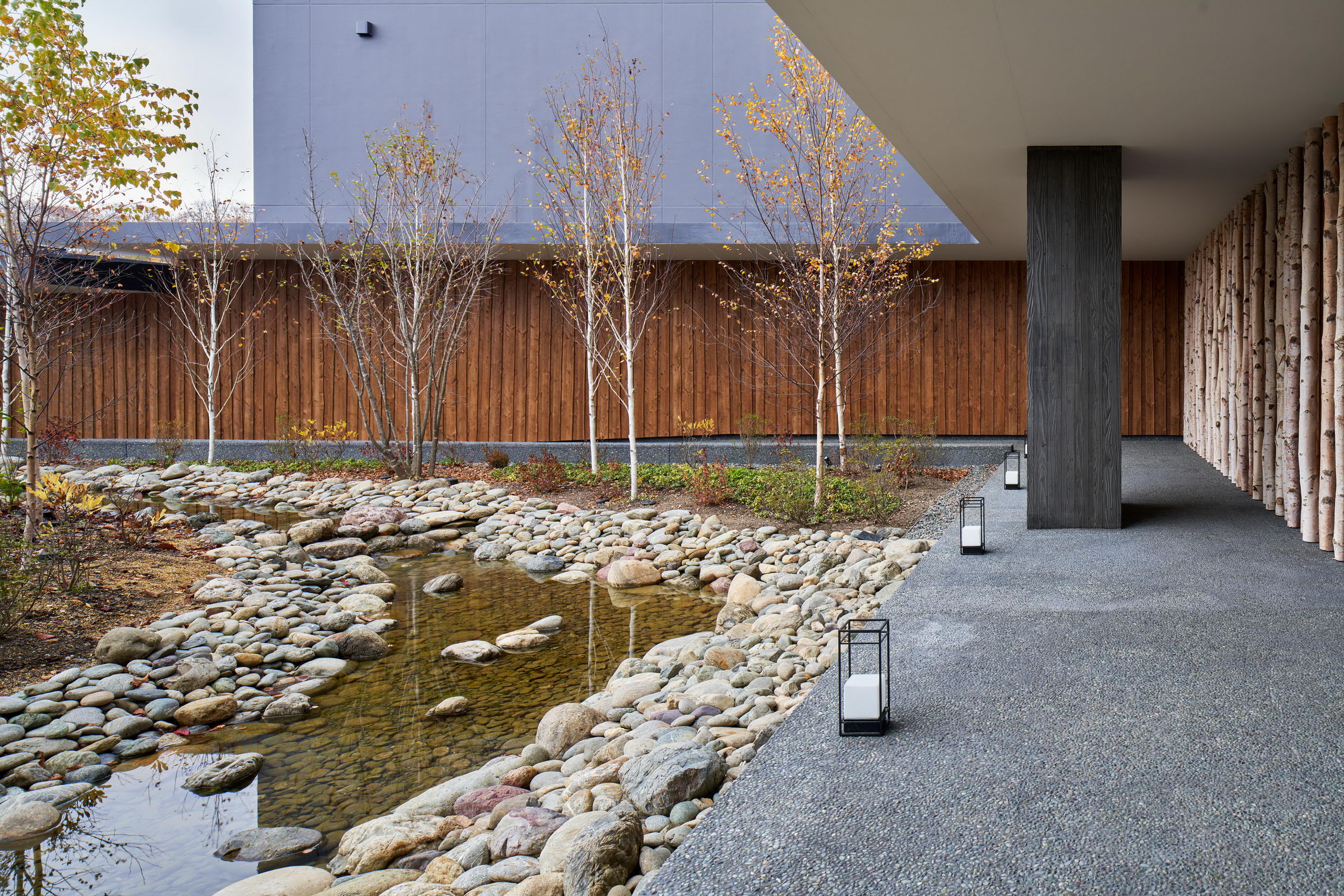
▽客房一层入口,室内白桦林图案是对村落森林的再现
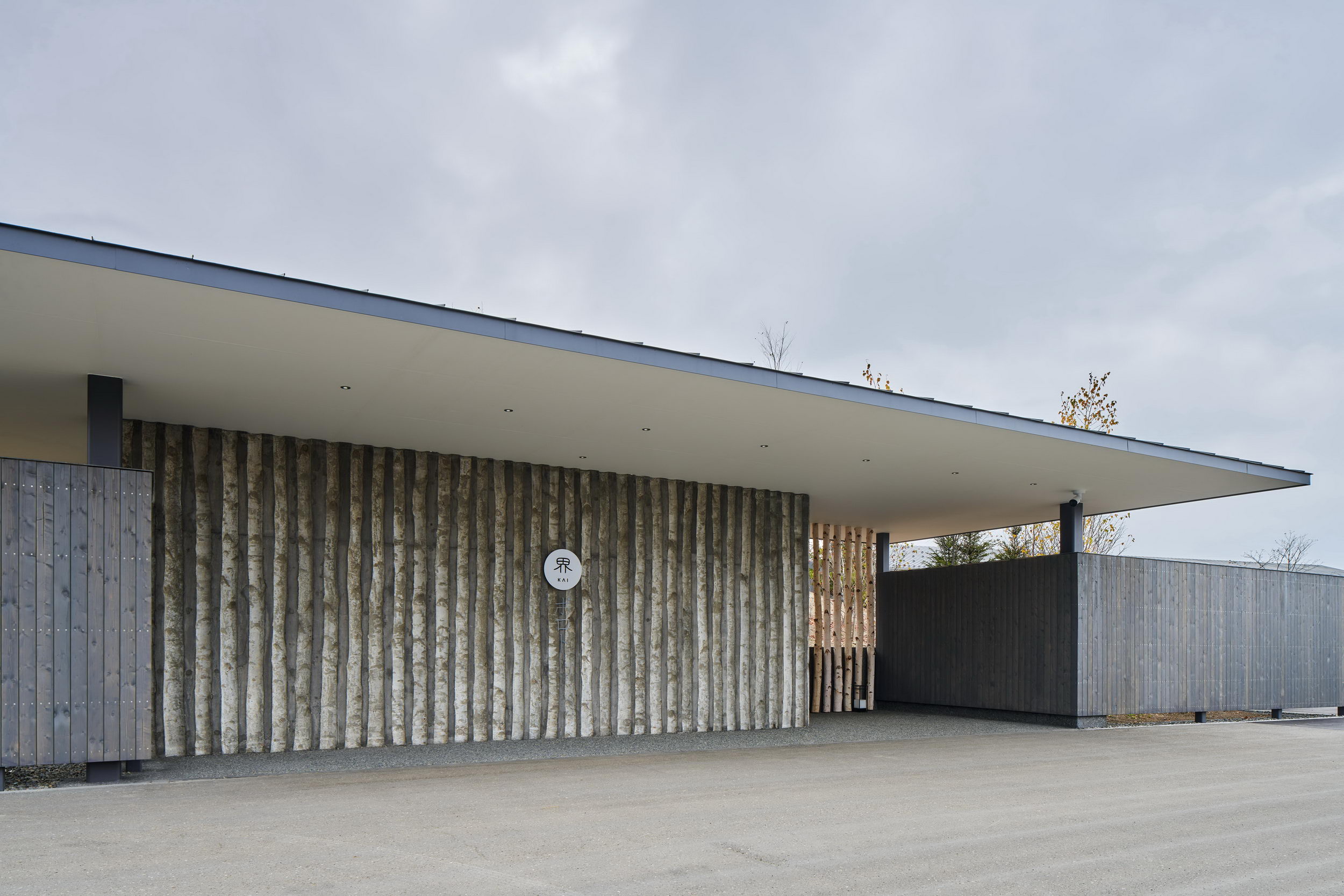
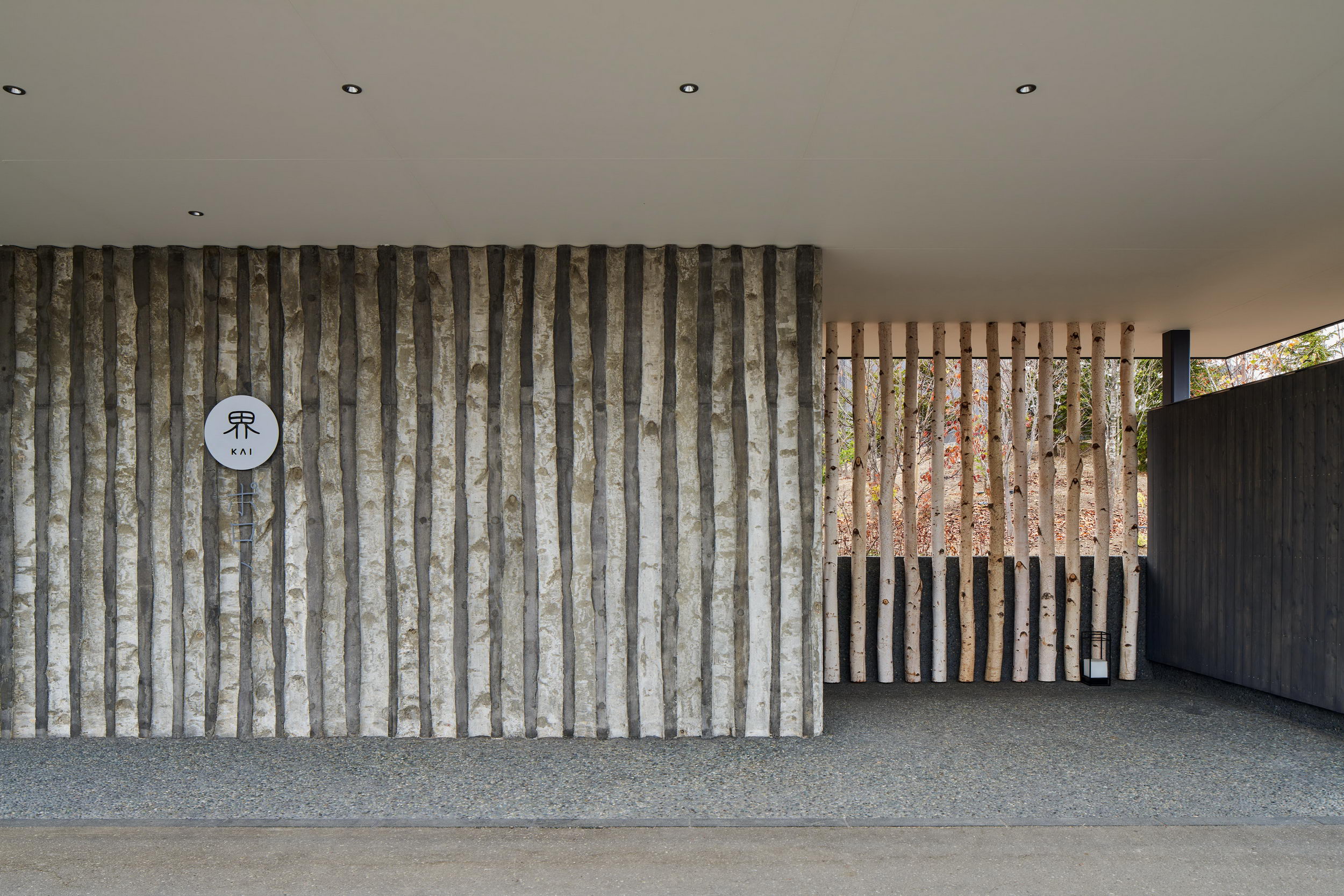
▽中央的混凝土浇筑墙用白桦圆木作为模板,在混凝土上转印出白桦图案
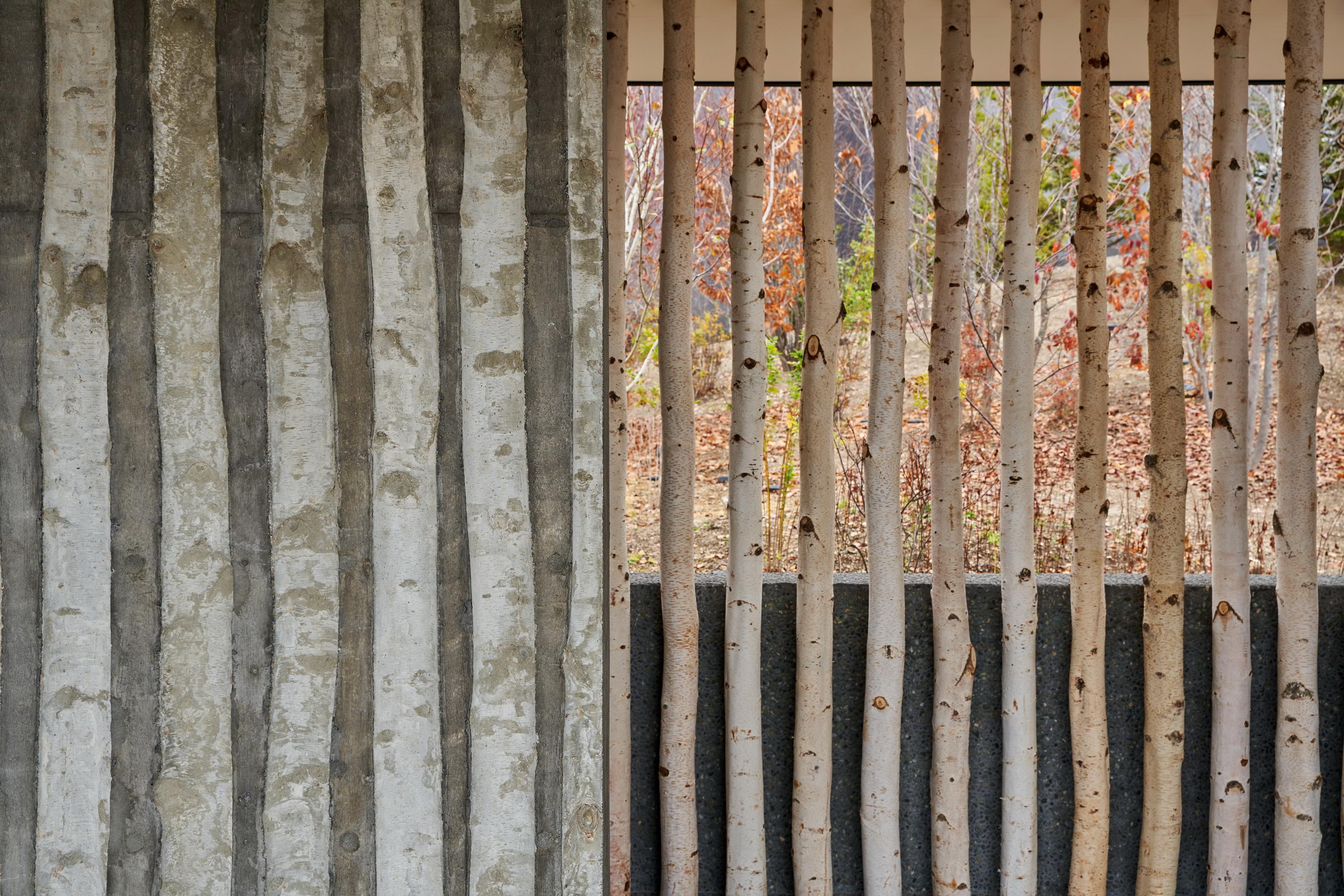
客房跨越河流架在水上,设计师在靠近湖边一侧设置了一座下沉式休息室,来访者坐在开放式壁炉旁,可以俯瞰独木舟码头和未冻结的水面。
On the lake side where the guestroom buildingbridges over the river, we decided to create a sunken lounge close to the waterwhere the canoe dock and ice-free water surface can be viewed while sitting aroundan open hearth.
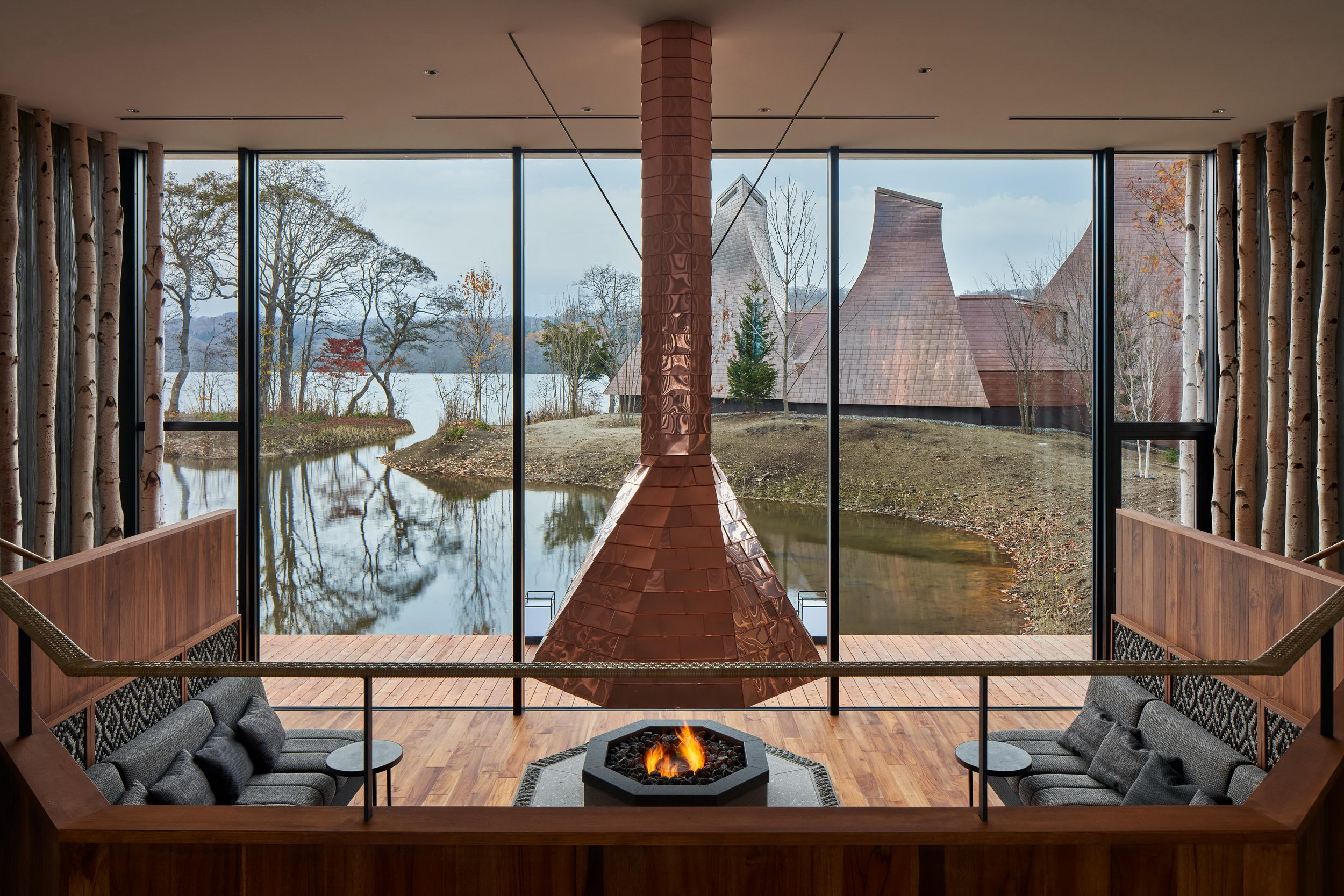
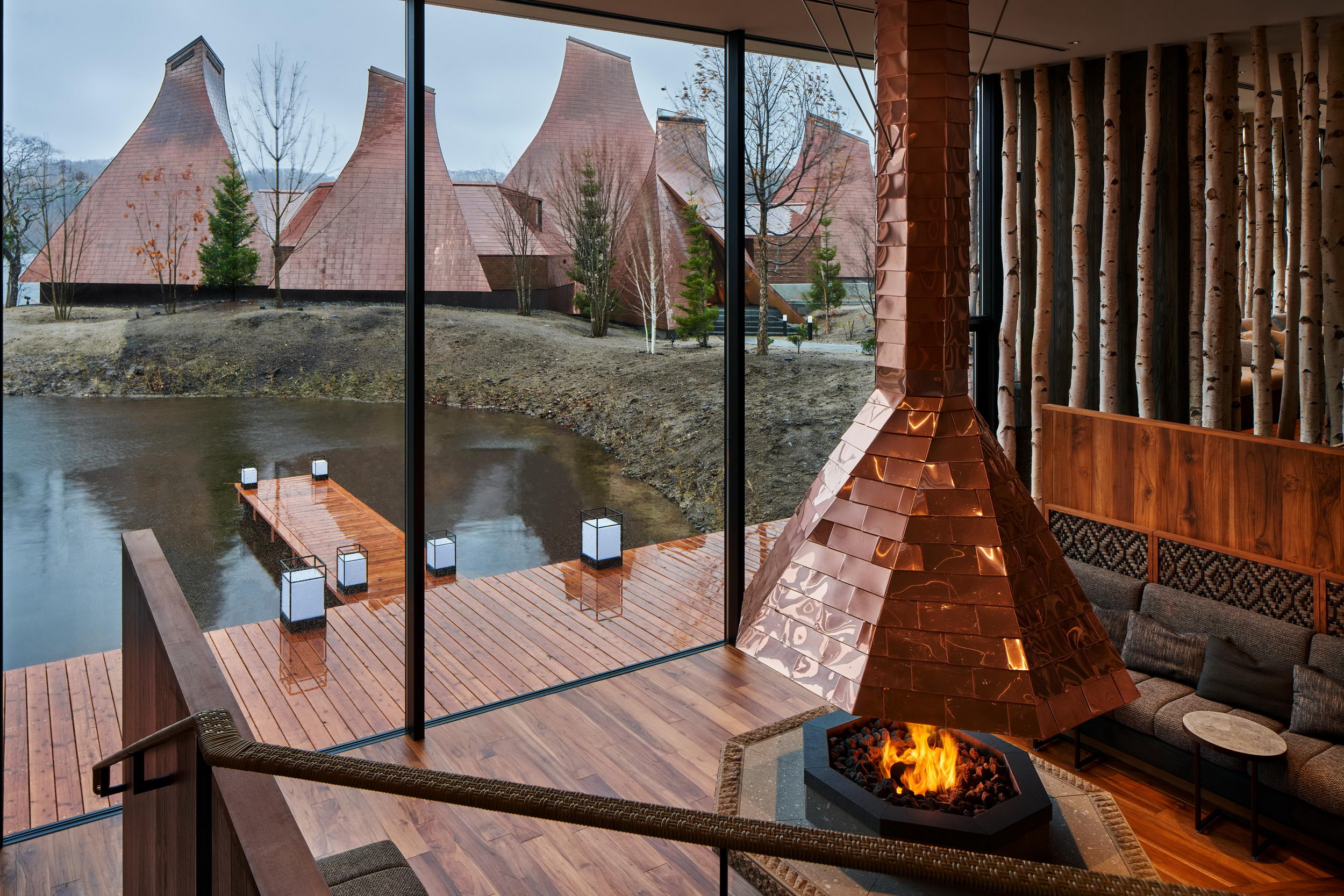
客房在炉膛形状的矮桌周围设置休息空间,配有柔和的间接照明,以纪念阿依努家族在Chise(家)炉膛周围交谈的习俗。阿依努族的图腾也以各种方式融入空间,用于墙纸、靠垫和艺术品,让客人切身感受阿依努人的生活方式,体验使用传统图案装饰坐垫和服饰的阿依努人的生活。
The guestrooms have a lounge space around alow table in a shape of hearth with gentle indirect lighting, honoring the Ainufamily custom of conversing around the hearth of Chise (home). Ainu patternswere used in various ways such as wallpaper, cushion cover, and art for gueststo sense the lifestyle of the Ainu, whose lives are surrounded by mats andclothes with traditional patterns.

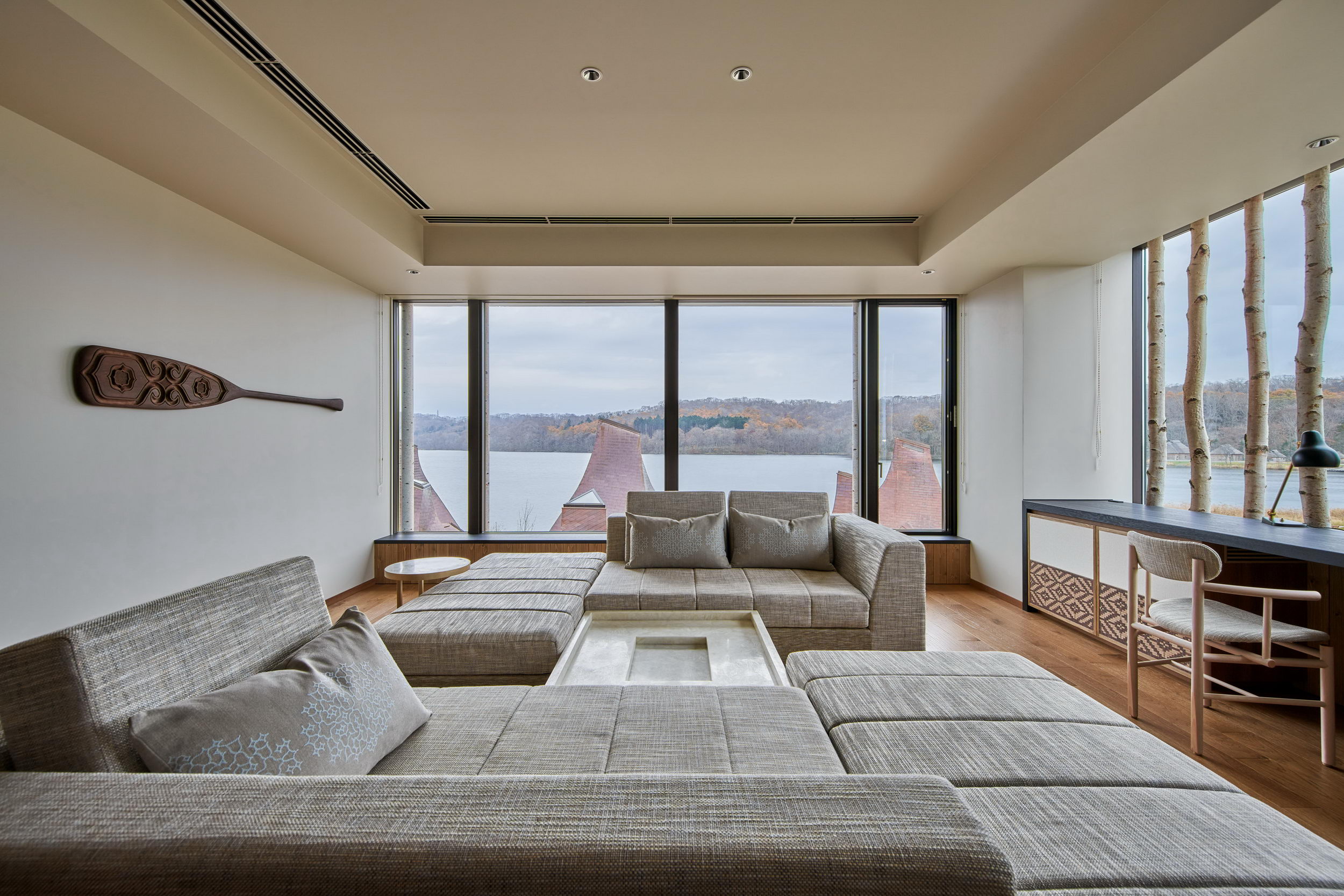

温泉小屋的灵感来自kucha,这是一种阿依努人在山上狩猎熊或是捕捉鲑鱼时搭建的野营小屋。kucha的结构被称为ketunni,由三根从侧面连接的原木组成。它的特点是具有倒三角金字塔形顶部,带有三个突出的原木尖端,用作营火的排烟口和光源。通过利用这一特点,几乎不设窗户的温泉设施变为一种生态结构,可以通过上升的气流获得柔和均匀的自然光和潮湿温暖的自然通风。从客房向下看,从顶端排出雾气的锥形小屋成为风景的一部分,与湖泊的地平线完美融合在一起。
The bathhouse was inspired by Kucha, the Ainu’s temporary hut used to bivouac when hunting for bears or waiting for salmon inthe mountains, and has a quiet presence that nestles close to the surroundings withoutintruding on the beautiful nature. Kucha’ s structure is referred to as Ketunni,a tripod structure made of three logs that are connected on the sides. Itsdistinctive feature is the inverted triangular pyramid apex with the end of thelogs protruding out, which serves as a smoke exhaust and skylight. By turningthis into a design element, the hot spring facility with limited windows becamean ecological structure with a gentle and uniform shower of natural light aswell as natural exhaust of warm humid air by updraft. When viewed from the guestrooms,the cone-shaped huts blowing smoke from the apex becomes part of the scenery withoutdisturbing the horizon of the lake.
▽温泉小屋继承了阿依努的建筑风格,重新诠释了圆木三角组合而成的“野营小屋”。
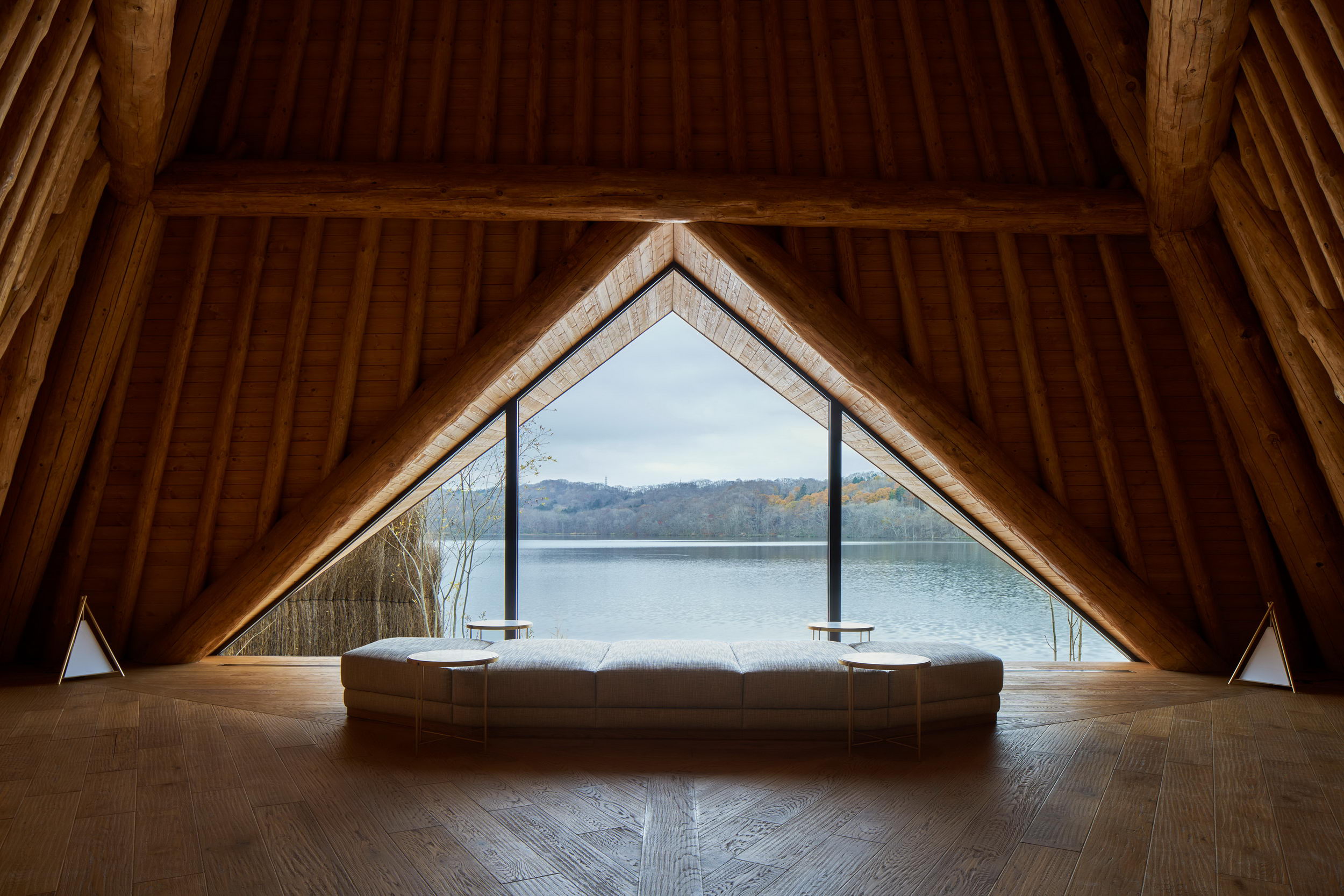
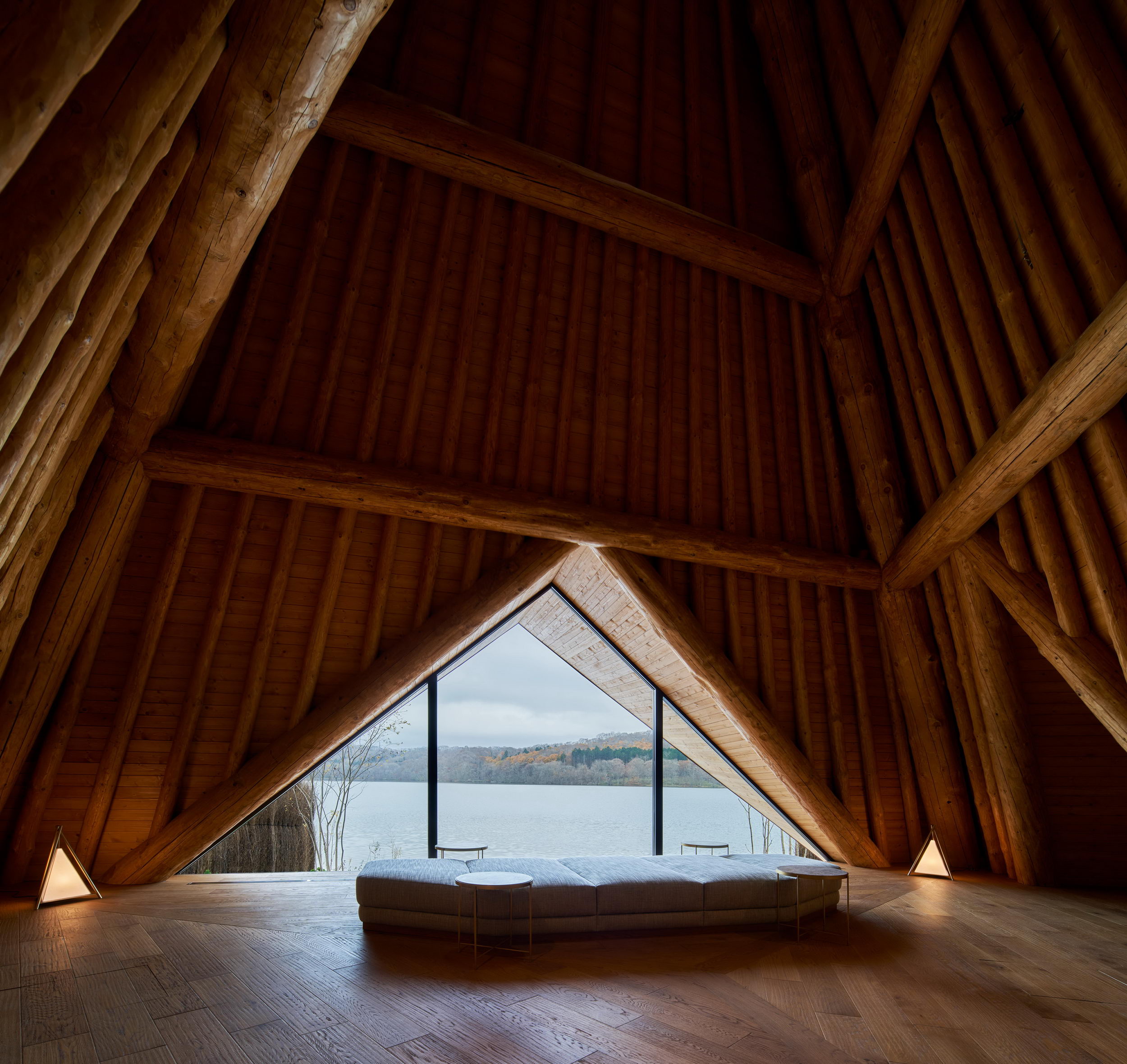
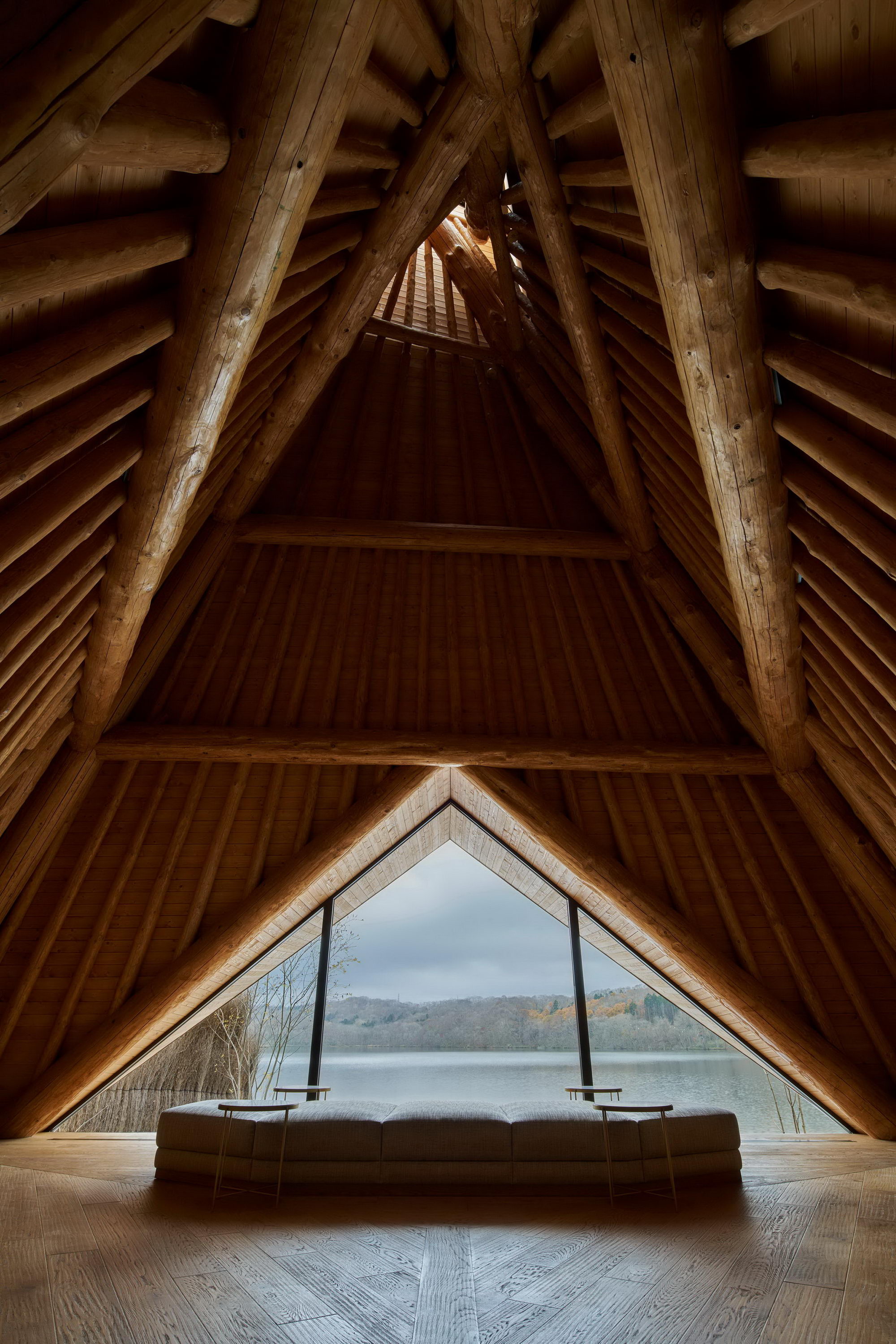
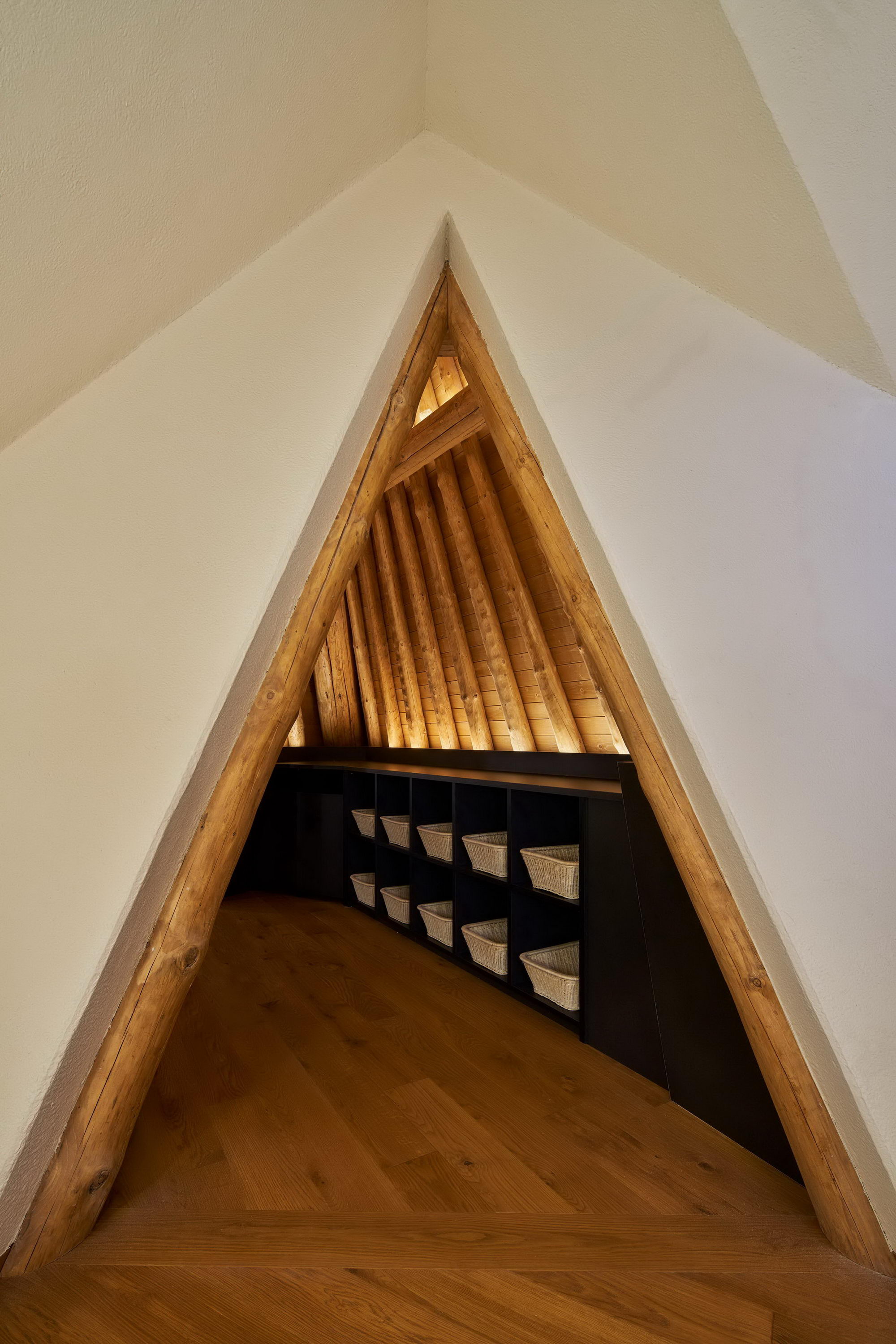 | 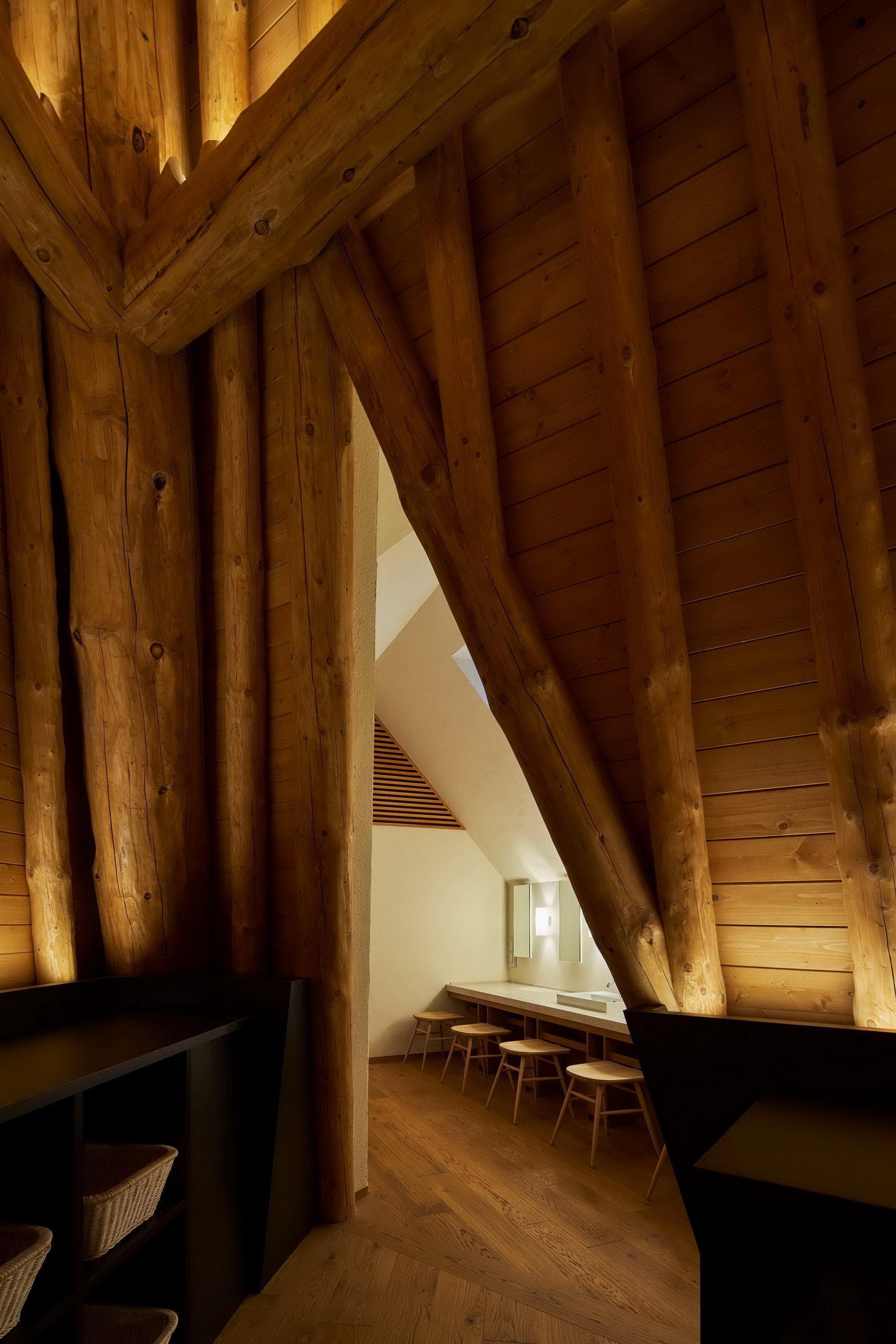 |
▽锥形的温泉小屋从顶端排出雾气
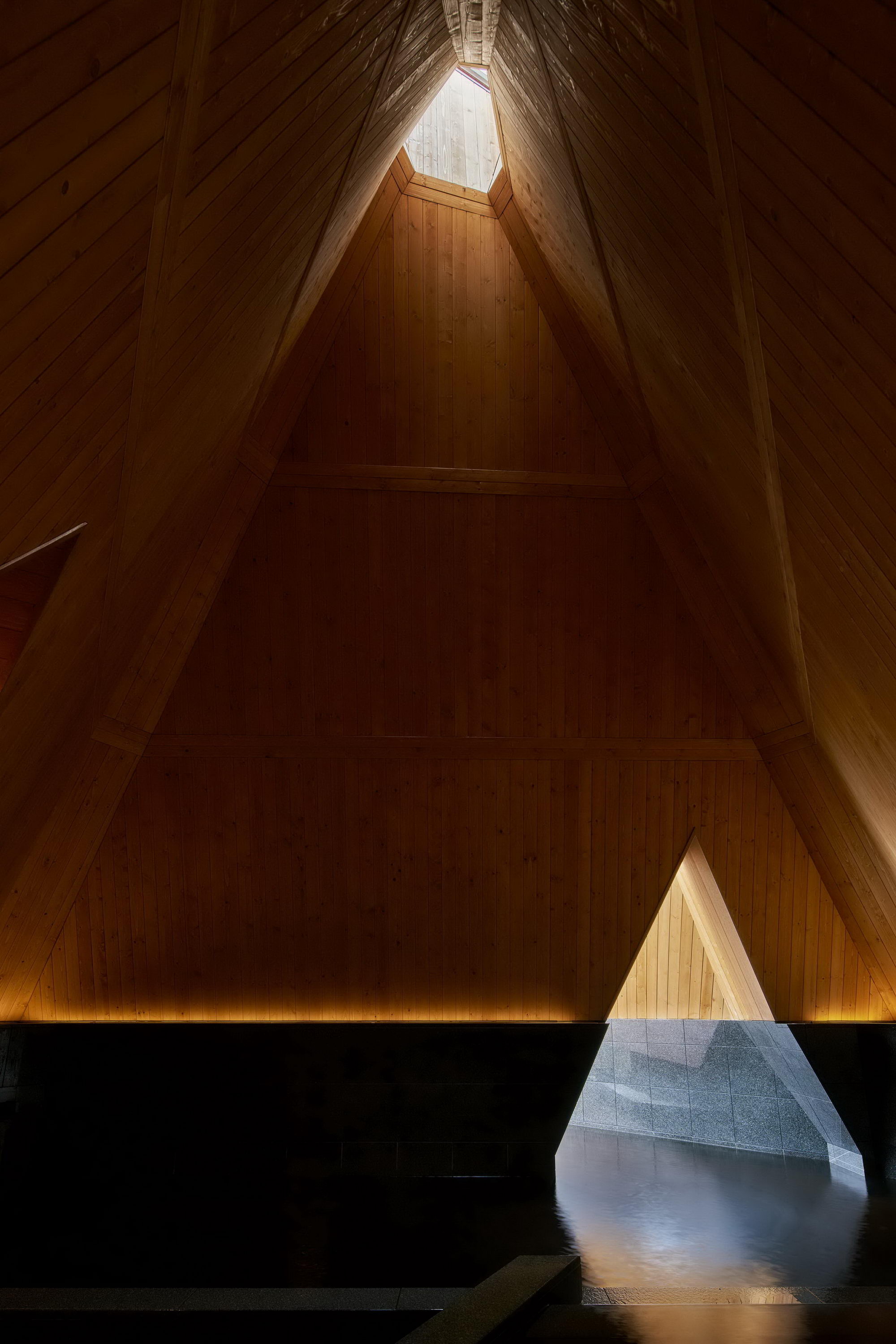
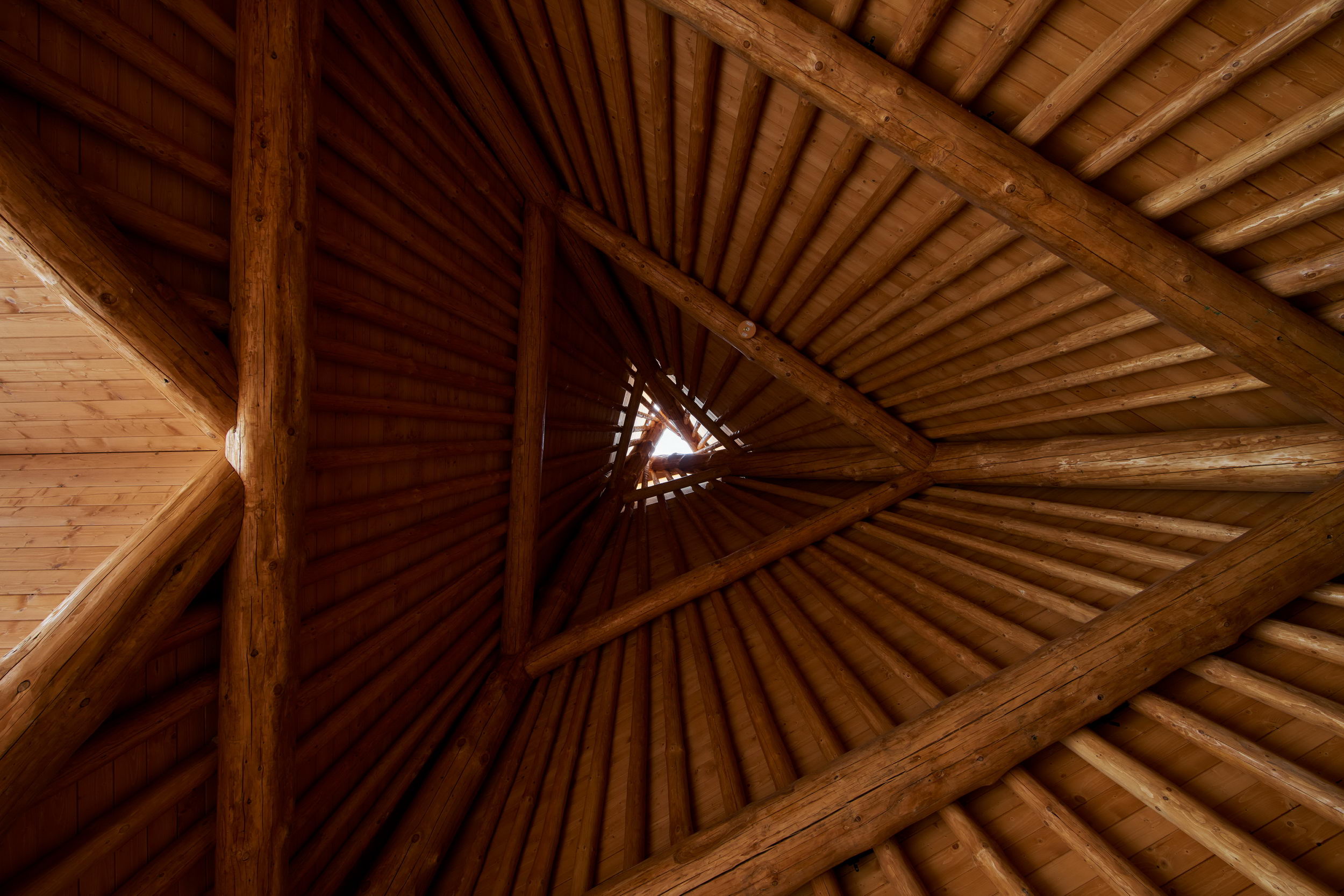
由于当地传统的温泉“Maru-no-Yu”(圆形浴池)无法欣赏户外风景,团队创造了一个洞穴般的带有地下温泉的空间,热水从地下涌出,天窗上不设玻璃,以便雨雪落入其中,与排除的热气相互消耗。温泉采用的是含有植物源性有机物的黑色沼泽温泉,可以将天窗的光线反射到水面上,引导人们在寻找光源的同时不由自主地抬起头,仰望天空。
Since no view could be provided,“Maru-no-Yu” (round bath), the bathhouse for the locals, was designed as a cavewith an underground hot spring. The skylight has no glass, warm air is naturallyexhausted while rain or snow fall inside. The hot spring is a black moor springthat contains organic substance from plants, and reflects the light from theskylight clearly on the water surface. This encourages the behavior ofintuitively raising the line of sight upward in search of the light source.

设计师在闲置的开发场地上种植了本土树木,主要是白桦。白桦是在荒地中最先发芽生根的树种,是恢复森林、保护其他植物的母树。因此,团队在建筑物的内外都创建了一片白桦林,其传递的信息不仅是保护和培育开发场地本身,也是阿依努文化。度假村的设计旨在铭记并盼望恢复阿依努人曾经与森林和河流的深厚关系。
The development site was vacant, and we plantedindigenous trees along with white birch. White birch is a mother tree that germinatesbefore others on a desolate land, restoring the forest while protecting other vegetations.We created a forest of white birch lumbers from thinning on the exterior and insideof the hotel, with a message of protecting and nurturing not only the developmentsite itself, but also the Ainu culture. The resort remembers and wishes to restorethe profound relationship the Ainu people once had with the forests and rivers.


▽室内夜景
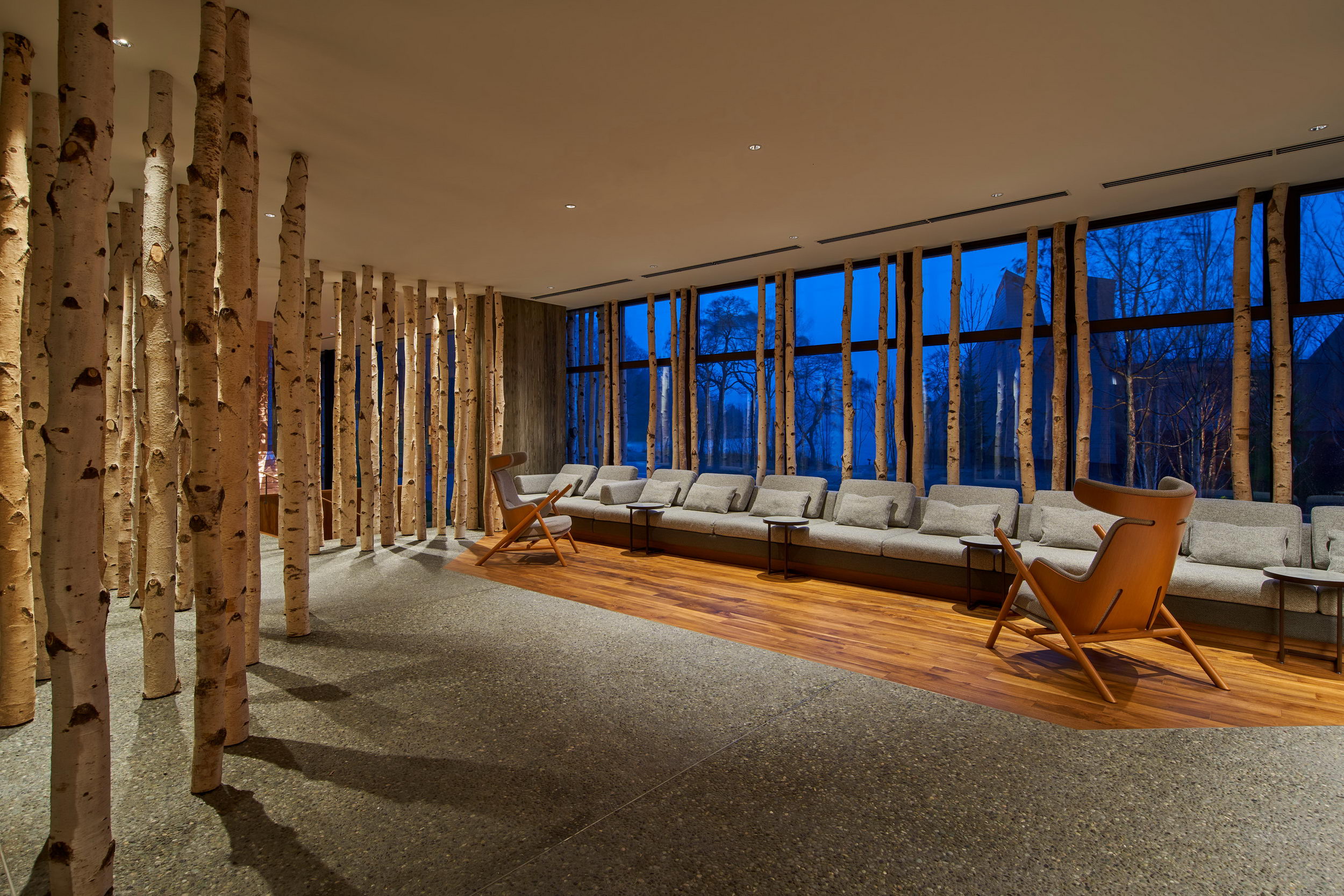

▽用餐区采用带孔的杉木板材,使光线像星星一样漏进室内
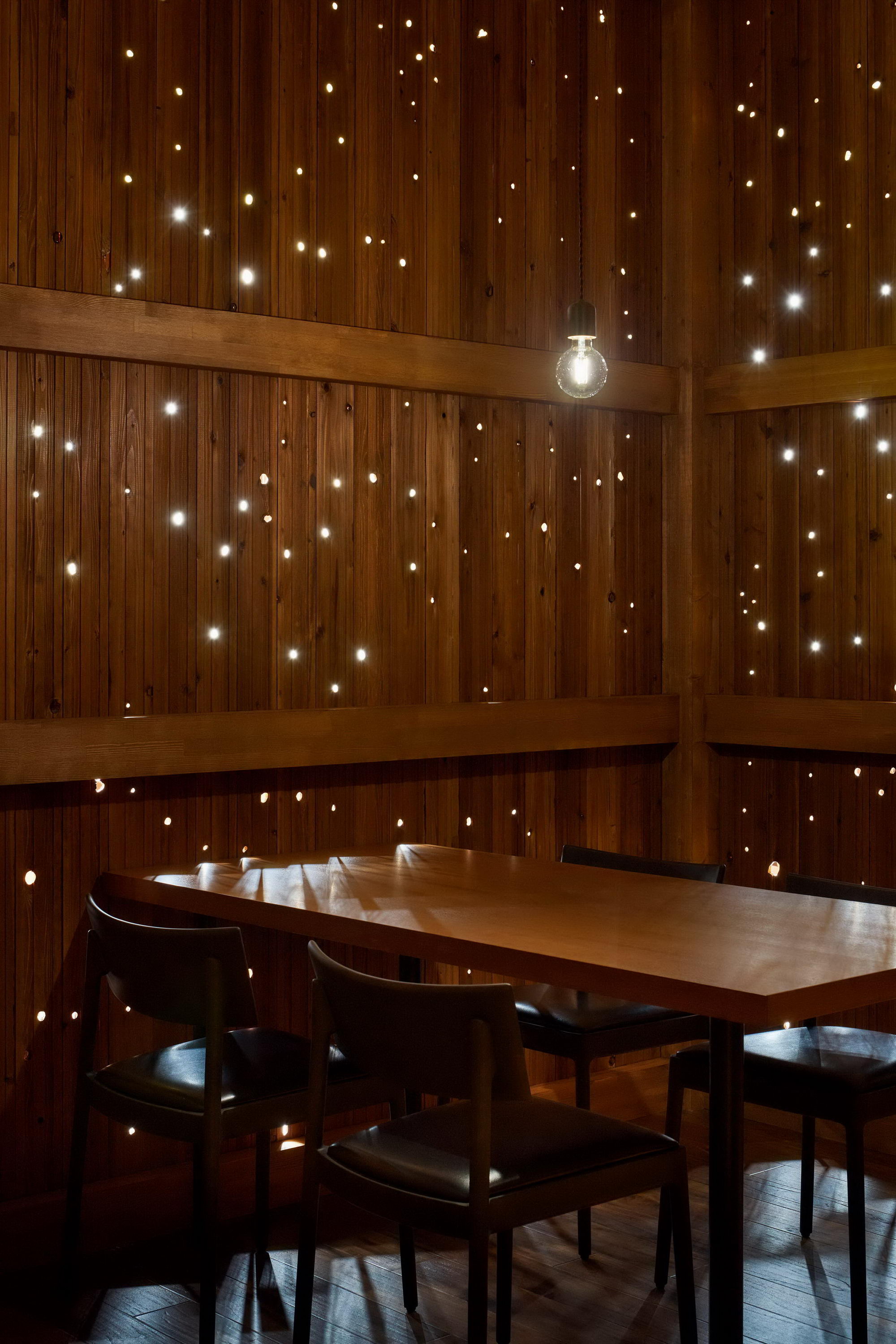
Project name: Hoshino Resorts KAI Poroto
Site area: 9,339m2
Structure: RC+Timber structure
Building site: Hokkaido,Japan
Total floor area: 4951m2
Architecture Design: Hiroshi Nakamura & NAP
Structure Design: Yamada Noriaki Structural Design Office
Principal use: Japanese Hot-spring resorts
Completion: 2021.10
Contractor: MAEDA CORPORATION
Photo: Koji Fujii / TOREAL